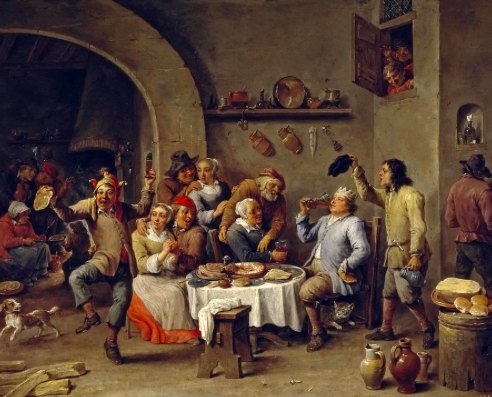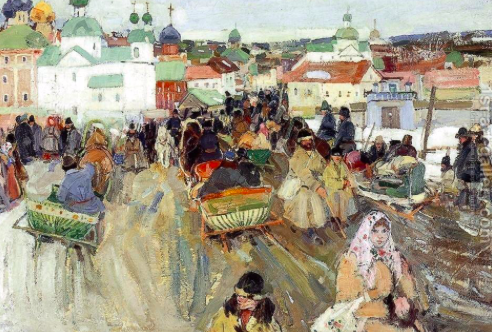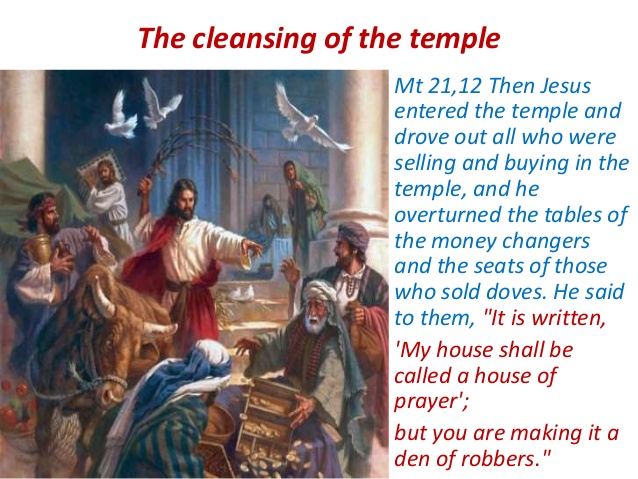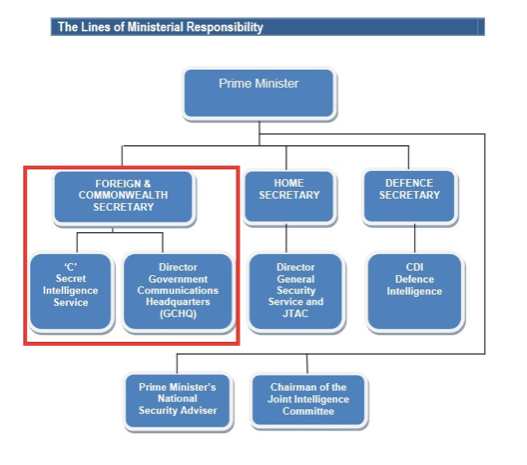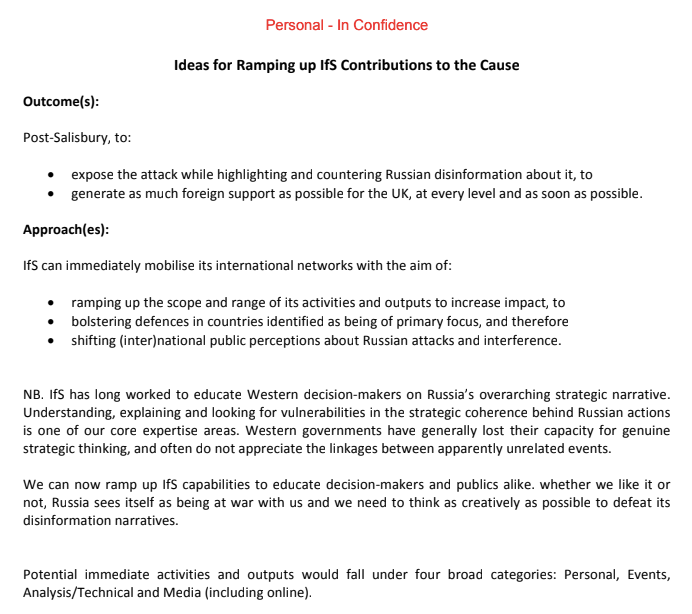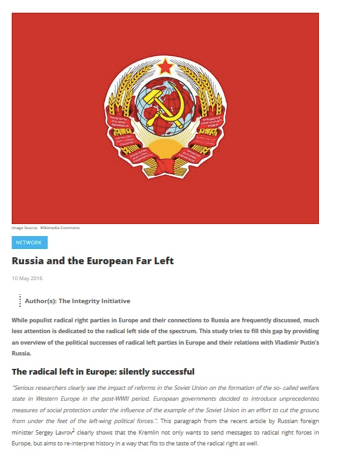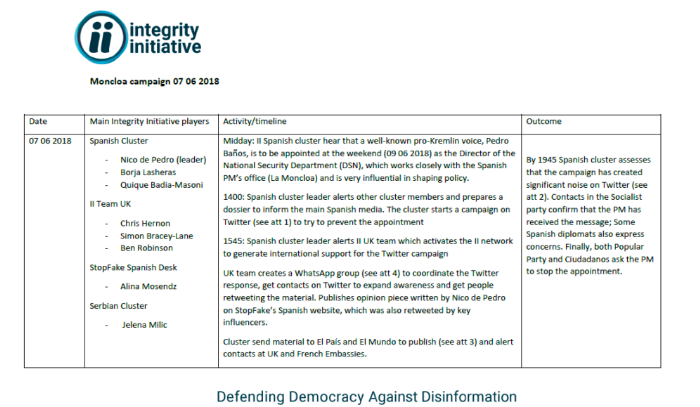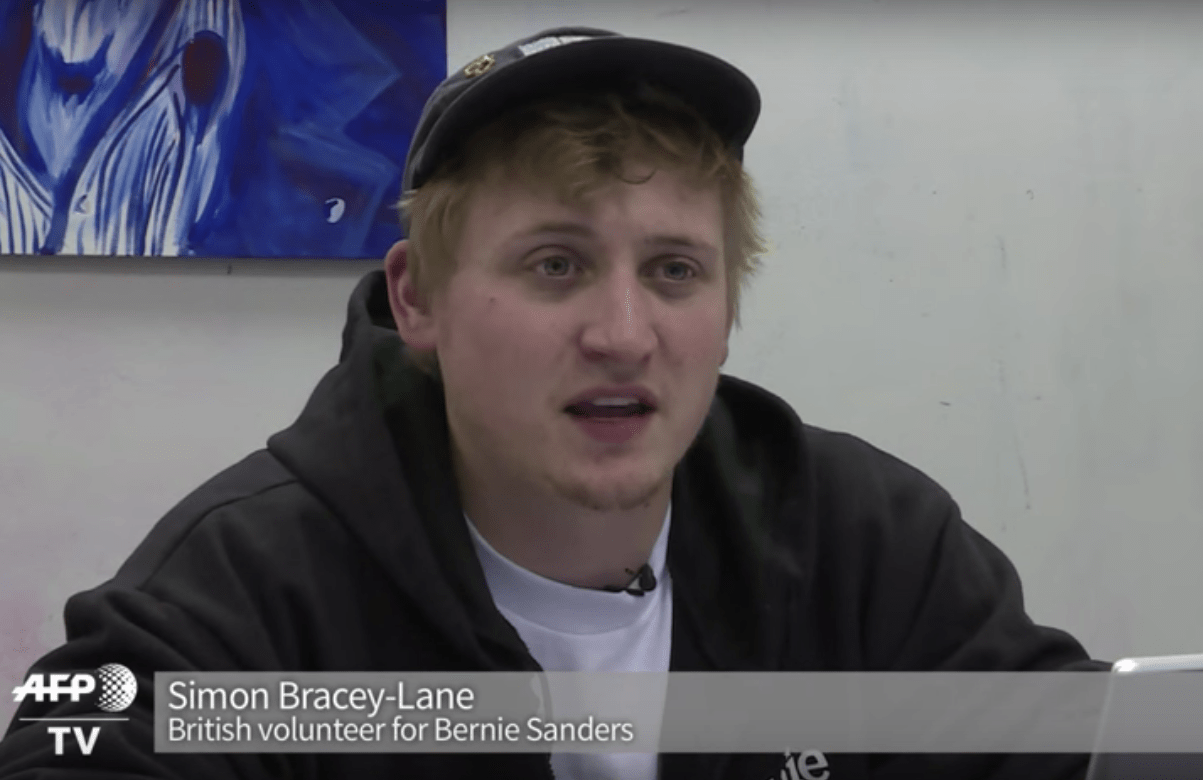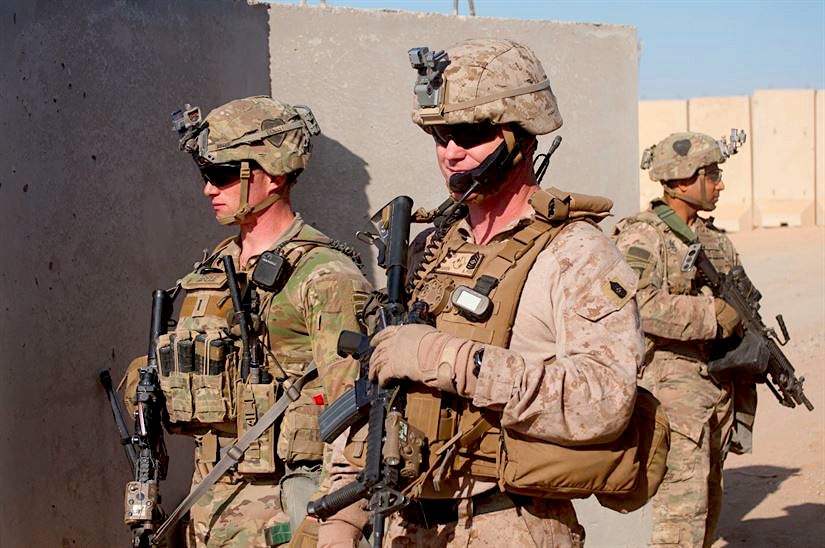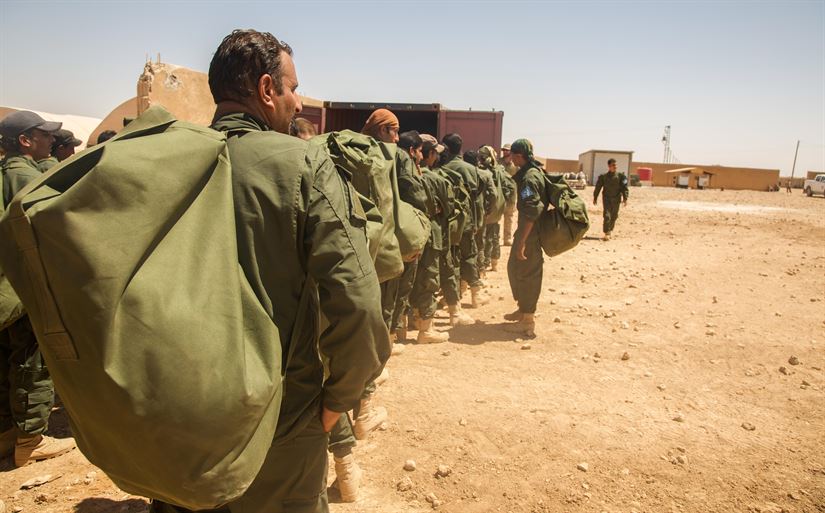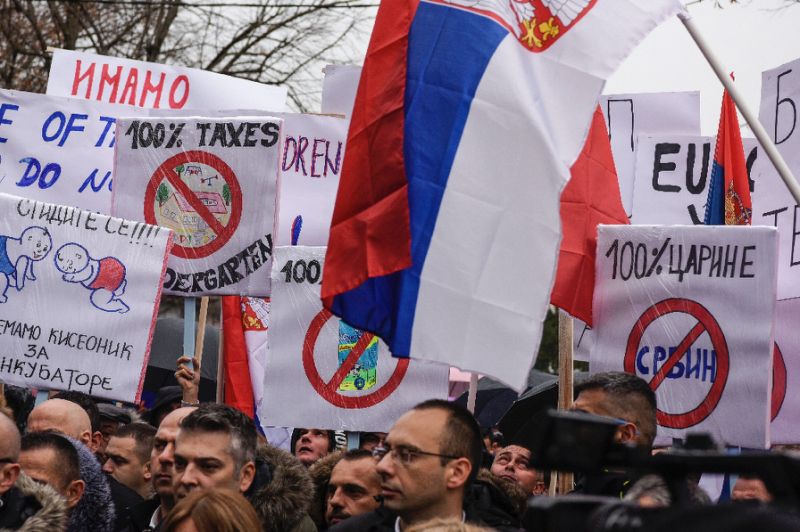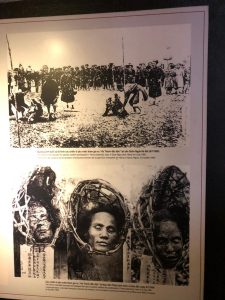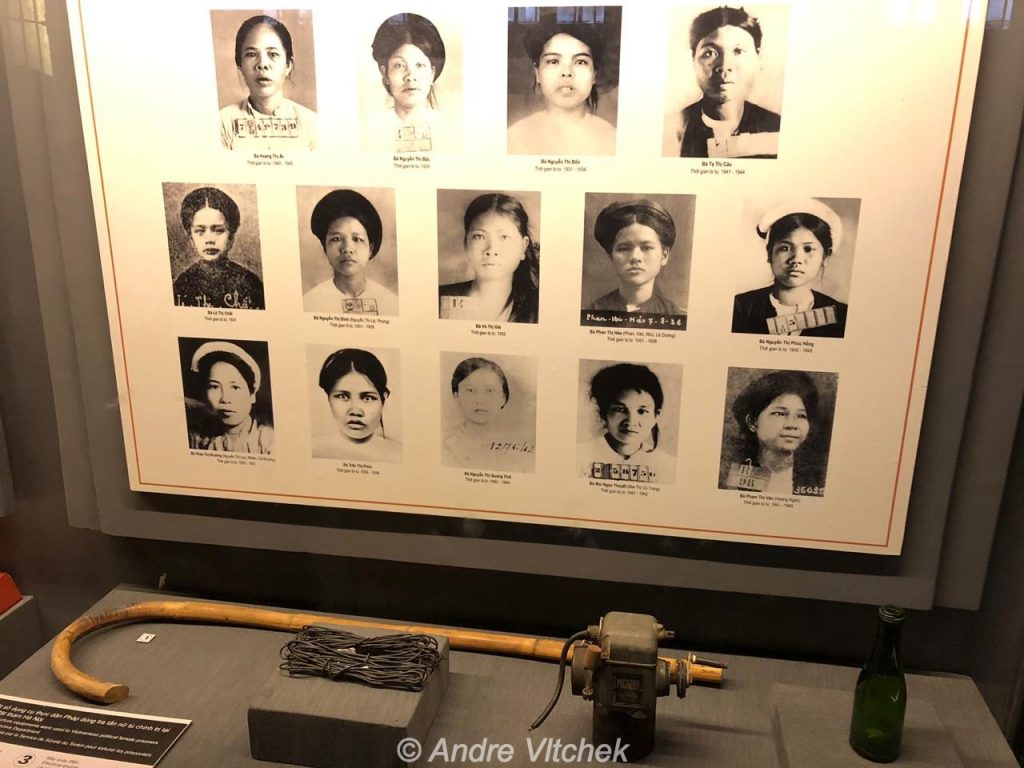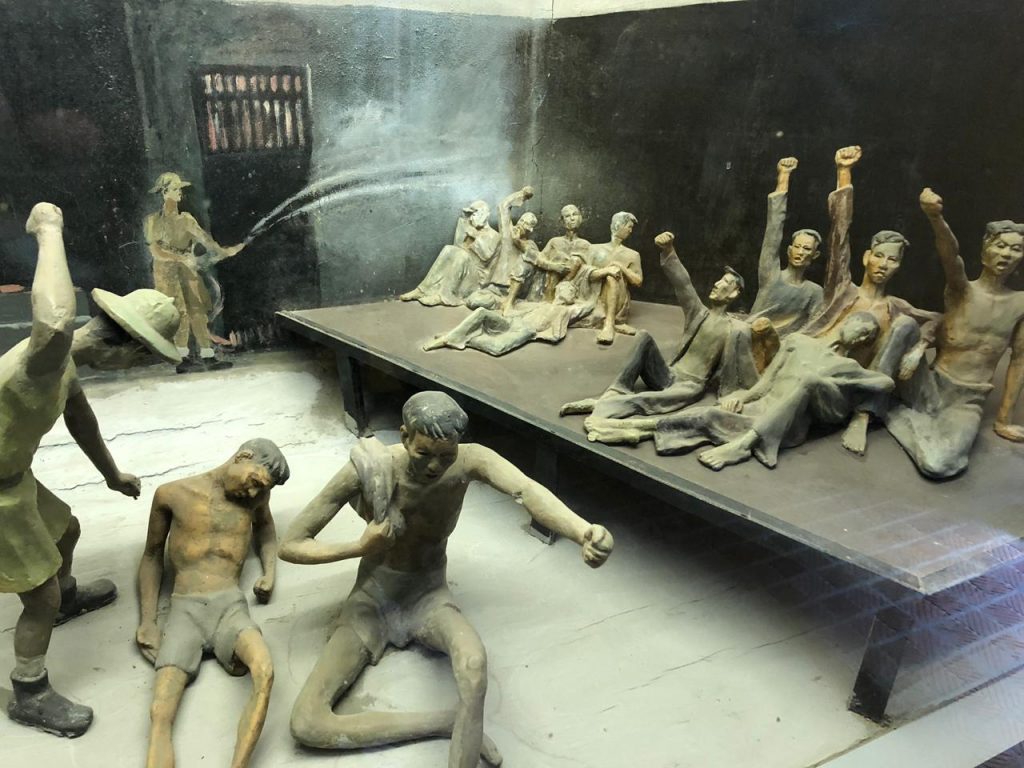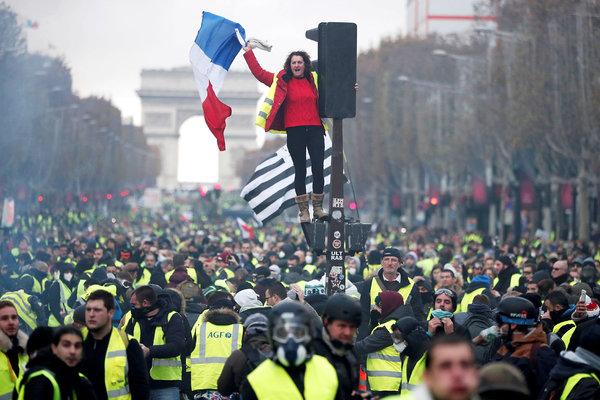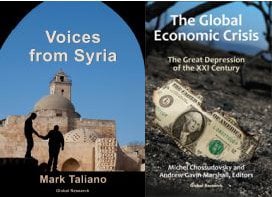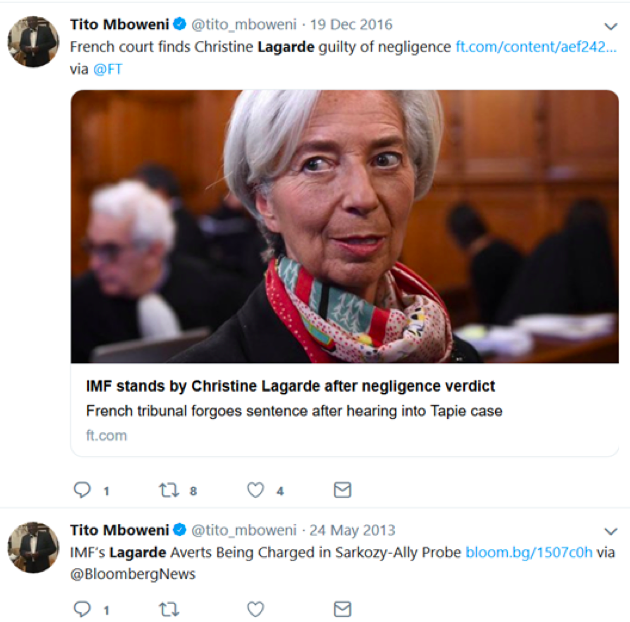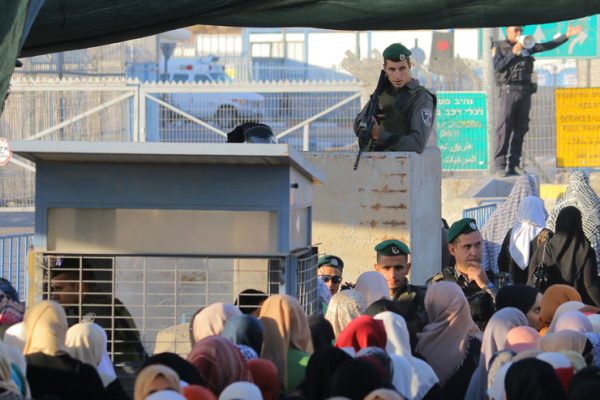“Doesn’t the Prime Minister realize that she has handed over power…The power that they want, is to be able to demonstrate [EU power] to every other country that might be thinking of leaving the EU.” — Dennis Skinner (MP-Labour/1970-present)
What a difference a day makes, or in the case of UK parliamentary political theatre applied to the ever-changing definition of Brexit; just a couple of hours will do.
Despite her Cabinet having been found in Contempt of Parliament for the first time in UK history due to the cover-up of portions of the very damning Attorney General’s report on Brexit, UK Prime Minister- for now- Theresa May showed her continued contempt: she continued undaunted.
On Tuesday, Dec. 10, 2018, the day before the finale- the Vote -of this two-and-a-half year debacle anxiously awaited by Britons month-after-month, and still somehow called Brexit, our plucky PM would suddenly pull the rug out from under her own continuing farcical sideshow of Parliamentary and Prime Ministerial treason.
Unfortunately for the UK, Ms May, the Energizer Bunny of UK politics, just won’t quit. Does she not know about the first rule of holes?
At 11:30 AM this day, a press release from the PM “assured” all of the UK that the vote would go on as scheduled for 7 PM the next day, Wednesday. To wit, the MPs and Cabinet members that are firmly in Ms May’s tow dutifully hit that day’s noon TV news circuit with similar pablum. For, suddenly at 1:30 PM it was next announced that the long waited for Brexit vote was off by order of Ms May. With her faux-Brexit vote about to go down the tubes faster than the sinking value of the UK pound, Ms May, again having no idea what to do, had opted for that age-old political act of desperation: She punted.
After the MPs ran to the House to attend the emergency session of Parliament in order to be formally notified of her announced weakness, the howls of anger were only superseded by the cacophony of laughter ringing off the walls of the House of Commons, regularly interspersed by iron voiced House Speaker, John Bercow‘s admonitions that each MP, “will be heard!” This was due to this session being a laugh-a-minute, must see spectacle of distortion, excuses, protestations of innocence, and assurances. Oh, yes…many, many… assurances. All due to this ever more desperate PM trying to defend the indefensible, her ”Deal.”
A deal which Brussels likes very, very much.
Speaker Bercow is a character. He is a turncoat Tory, now in the Labour field of influence. The Cons detest him. It should be noted for those just now tuning in to this far-reaching day-to-day Shakespearian political tragedy, that when it comes to British parliamentary procedure, grandstanding combined with florid oration is the rule. This creates an entertaining aspect very rarely seen in the US Congress, one that borders on the theatrical. Or the farcical. Speaker John Bercow is no exception.
Short, stout, deep complexioned and featuring black bird-like eyes, with his black Speaker’s robe, draped over round shoulders he assumes an almost raven-like posture while observing all from the Speaker’s chair at the far end of the House of Commons. Again and again, he rose to deliver his riveting stare, side-to-side, to every MP. Possessed of the perfect gravel voice, Bercow holds sway with an iron presence, but loquacious voice. He is even-tempered when forceful, but not shy in his rebukes and directions. However, when the Speaker speaks, all again… becomes quiet.
Now that PM May’s chance to speak was over, it was the turn of all the MPs.
“This is a government in a total state of collapse,” said MP Kirsty Blackman (SNP) in an opening salvo. “This government [the Tories] is focused on saving the Prime Minister’s job instead of doing what right for the county!”
Sir William Cash [Cons.] calmly assessed, quite accurately, that beyond the seemingly singular focus on the “Backstop,” Britain would also lose access to the EU courts and control over its own laws because of the terms of the still existing EU Customs Union. He went on to note, that the PM had not yet released all of the Attorney General’s report for which she was already in contempt. He called on her to do so immediately.
The embattled PM, still unable to “listen,” despite her protestations to the contrary, deflected immediately; maintaining that her own separately contemptuous, but voluminous Cabinet report on this subject would suffice, instead.
Sir Vincent Cable [Lib-Dem] called the proceedings a “fiasco,” and noted that the myriad of Cabinet indiscretions had caused the Tory government “to lose all authority.” He went on further to forcefully call for labour to commence a full House vote of “no-confidence” in the PM.
Yvette Cooper [Lab.] bolstered his point. “How can she [PM] possibly talk about duty and honour and faith in politics when we can’t trust the most basic things her ministers are saying!”
Still not listening, again, the PM responded instead by pulling her own preferred question from thin air, answering irrelevantly that she had now suddenly realized that the “Backstop” needed work, and thanked her “right honourable college” for bringing it to her attention.
Really.
Well, all this was bringing the House down and the laughs and jeers were rising quickly. This brought Speaker Bercow to his feet again, this time to formally address all present. His forceful voice had been intermittently booming throughout, but now he provided, regarding the PM’s unilateral postponement of the vote today, a reasoned clinical evaluation based on previous parliamentary procedure.
All listened. Or, else.
As Bercow pointed out, the Tory cabinet and Ms May had no authority to cancel the vote without an additional and separate vote by this same seated parliament regarding whether or not to allow a postponement of the current ongoing five days of scheduled debate. Postponement of the Brexit vote was also subject a subsequent vote by parliament. To all this, he said in summation,
“Halting the debate, after no fewer than 167 colleagues have taken the trouble to contribute, will be thought by many members of this house…to… be…discourteous!”
Here he paused, tightly grinning and surveying the entire house row-by-row as the murmurs in the gallery immediately rose before his patented stare brought them down again quickly. He continued, that there were only two ways to conclude the vote.
“The first… and infinitely more preferable… would be for an MP to move at the onset of the day’s debate: that the debate be adjourned. This will give the House the chance to vote whether to terminate the debate.”
The other: Well, that was already a matter of history.
Sitting momentarily, Bercow again allowed the MPs to continue.
Featuring her listening skills again, Ms May’s ears only tuned to a single frequency coming from Brussels, somehow the Backstop regarding the Irish border, one of the most contentious give-ins by the PM, was still in place. This was was outrageous since Ireland had made their opposition clear on this for months prior.
Said, Hilary Benn [Lab.],
“It was her [PM] red-lines that created the problem with the border with Northern Island and lead to such a weak position.”
Then he added what was likely the most important question at this juncture.
“Can she [PM] tell us of any [EU] leader in the re-negotiations? If not, postponement …is a waste of time!”
Again, Ms May’s ears allowed her to answer her own chosen question, this time with her favourite set of one-liners: Her personal assurances of EU assurances. Yes, she said to the MPs, she had many re-assurances, yet those all failed to have a surname, but they would be willing to renegotiate. All was fine, the PM assured and would be worked out the very next day. She assured the MPs, that once she rushed off to Germany and Denmark she would then bring back- not to worry-a better deal.
Nigel Dodds [D.U.P.] affirmed her delusions, adding,
“This isn’t credible, is it? She talks about reassurances and assurances. But this is [Brexit] a legally binding text!”
She then assured, to howls of laughter and sideways jeers that she had indeed been listening to the will of the Parliament and that she had assurances from EU members that all would end up just fine. Assurances. Not one member received any names of those MEPs who were providing all those assurances.
Apparently unfamiliar with the first rule of holes, the PM’s ears were still not correctly receiving transmissions from Junker and Tusk either.
Junker and Tusk had already made it very clear, publicly, that no new negotiations would take place: Ever! Challenged on this point by Damian Green [Cons], Ms May provided more of her own assurances. The EU, she said, was still willing to renegotiate. Affecting a reassuring tone, she again boastfully reassured the collective House full of sceptical MPs,
“…if [EU] assurances are not sufficient, we will go back to the EU for further assurances.”
Really.
Britons would all do well at this time to discuss the true meaning- and risk- of “assurances,” with Mikhail Gorbachev: perhaps asking him about all those NATO assurances worked out post-1990, once he divested the Soviet Union in exchange for…
How did all those assurances work out?
Wednesday.
So off the Hague the next morning she was, full of smiles as the morning news saw her jet off to her promised, although belated, victory. Predictably, for those in Parliament correctly tuned into the show, her unfounded assurances, like her leadership, would be proven to be utter rot!
Before tea time on this day that was supposed to feature the Vote, PM May already had the same defeated, puppy dog look that had adorned incoming Greek PM Alexia Tsipras. He, too, returned home from trying to renegotiate with the EU’s Masters of the Universe. May, like Tsipras, had met her match quickly at the hands of the grandmother of death, German Chancellor, Angela Merkel and the grand wizards of EU central control: Donald Tusk and Jean-Claude Junker. All that was missing this time was that skinny, over-tanned, IMF vulture in pearls: Christine Le Garde.
Said Tusk, now translating for the PM,
“I have no mandate to organise any further negotiations. We have to exclude any further opening of the withdrawal agreement.” Crying crocodile tears and showing an unusual sense of humour, he added,
“But of course, we are staying here in Brussels and I’m always at the PM’s disposal.”
Fortunately for those still watching, the final act of her black comedy routine was not over yet. As the PM next flew back to London, hat in hand but now empty of assurances, she was welcomed home by her Conservative Party and was presented with the Triumphal Ornaments of… a Tory vote of [no] confidence.
Enter Jeremy Corbyn.
Corbyn had yet to drive the knife in for the kill. He doesn’t have too. With Ms May growing more adept each day at political harikari and dragging her party with her, Corbyn can sit calmly and let the Tories feed on their PM. His nuclear option of calling a full House vote of [no] confidence sits each day tucked in his breast pocket just mere feet away as he daily stares at the PM. With the SNC and DUP calling for him to call for a full vote as well as the Labour majority, Corbyn can keep his powder dry for now. With Brussels already handing the PM all the rope she needs to hang herself and her party, her opposition has no better antagonist to exploit than the embattled Ms May.
This day’s Tory [no] confidence vote was as farcical as it was self-serving by the Tory cabinet and their lackeys. Now desperate to save face for the Conservative Party during the rapidly growing awareness that they have been collectively up to no good, they had no choice. After getting the required 48 letters, it was on for the Tories to show their outrage at the PM for the next couple of hours. The script for this act was obvious before the curtain. Only 117 voted against their PM while 200 said she could stay. This was made all the easier for them since this and the total was a secret vote, so no one was accountable for their vote.
Really.
But behind the scene was a far more obvious raison d’etre of the 200. With their PM twisting in the wind, only a political novice would allow for a changing of the guard at No. 10. It would have meant a new PM. Frontrunners, Boris Johnson, Amber Rudd, and Sajid Javid are not dumb enough to take on this mess that is political suicide for anyone. So the vote was scripted and their final line this day’s performance was, “Let her hang!”
Thursday.
Having the night before assured parliament that her version of Brexit would come up for a vote by Jan 21 the PM was off to twist her own knives into enough of her MPs in order to get them to turn on their country in favour of the EU. Ms May did finally admit that she knew her deal, the one she falsely calls Brexit, will never pass. In turn, she said rather magnanimously, that she would step down as PM before the 2022 elections.
That joke, of course, wrote itself.
Ignoring the first rule of holes, thus having already provided peerages for MPs willing to turncoat, the Tories next decided to toss the national women’s vote on top of Ms May’s grave. Proving desperation, they reinstated MPs Andrew Griffiths and Charlie Elphicke who were both suspended over sex allegations. Griffiths, the prime minister’s former chief of staff and the MP for Burton and Uttoxeter, resigned as a minister in July and suspended from the whip after sending hundreds of sexually explicit messages to two women in his constituency. Jess Phillips, the Labour MP for Yardley and a campaigner for women who have been abused, said,
“The message it sends to every person who has complained, those who gave evidence to the Cox inquiry and every person who has been abused, is that the prime minister is not on your side.”
So, Ms May and her Cons must pray for the short-term memory loss of all of the UK’s women voters. And… women vote!
Friday.
The EU, thanks to Ms May has Briton right where it wants it. In the appropriate words of former US president Teddy Roosevelt,
“Once you have them by the balls… their hearts and minds will follow.”
Well, Ms May sure doesn’t have a pair, so the EU will now squeeze the UK parliament and its people… hard!
It’s easy to tell who in this national tragedy is playing chess and who is playing “chequers.” As the now cancelled five-day debate began, and after two-and-a-half years, the European Court of Justice issued an opinion that the UK could just, all-of-a-sudden, unilaterally cancel Article 50 and stay in the EU. Like Greece, Junker and his EU co-conspirators, to which Ms May must now be considered for membership, are about to divide first, and then conquer Britain.
Thanks to this latest EU chess move, the EU would Britain believe it now has more choices, not two. All of them are bad for those who voted to leave the EU and being used in a carrot-and-stick manner by the UK media to fracture voter opinion beyond yes or no. The daily papers now sing the praises of alternatives, when just a week ago they were the collective champions of Yes.
Regardless, all are victories for Brussels.
No matter, first there will be a vote on the bastardized form of Brexit as it stands. So any alternatives begin after a vote sometime before Jan. 21.
1) Vote yes to the deal and take it.
This is a very bad deal and all assurances and reassurances won’t change it. If the vote had been held on Wednesday, it would have been defeated easily. That’s why Ms May stopped it. As has been examined in a previous article, bellowed from the halls of the House repeatedly and quoted herein, the PM’s deal is worse than staying in the EU. This is now, very conspicuously, a possibility should a Yes vote be extracted, bribed, intimidated or cajoled from parliament.
Thankfully, because of the vote, turncoat MPs will be exposed and UK outrage will be given a set of names to remember. So, all will have to consider their political futures and the memory of their voters before expressing their true allegiance on paper.
What yes also means is the end of the Conservative Party’s purchased majority; the accelerated pre-2022 demise of their PM; a new Scottish independence referendum; more opposition SNC seats in the House; a subsequent Labour Party majority and/or ruling coalition; and a formal vote of no-confidence of the full House for the PM. Worse, by far, the likely ascension of Jeremy Corbyn to new PM. All before the next election. If unsuccessful, Corbyn and Labour will slowly unwrap all the rope from Ms May’s neck and use it again to strangle the Cons and any new PM. For Labour, Brexit is the gift that keeps on giving.
For the Cons, political survival is truly at historic levels.
2) Vote No and face the uncertainty of a Hard Brexit.
This is the result of more bad planning by the Cabinet that had not created a plan B- just like Greece- for when the EU would decide to drop their PM down their gallows hole. As of Tuesday, it is universally acknowledged that a No vote is highly likely. As pointed out in a previous article, should a Yes vote prevail- a vote that is not secret this time- Britons will next be able to add up and list the names of their MPs that sold out their voter’s interests and their country. If so, on March 29, 2019 Brits will have to scramble into the unknown without trade agreements in place, new treaties signed, or binding immigration standards, to mention just a few. Without a plan B, one that will have to be debated, and voted on beforehand just like the faux-Brexit deal all of the UK will be suddenly plunged into uncertainty. Uncertainty… and fear.
Fear sells.
The UK media is just as adept at using fear as a political tool of manipulation as their US counterparts. Fortunately, Brits are not, generally, as wilfully ignorant as Americans. The media, as of Wednesday, has lost the ability to promote a Yes vote on Brexit without readers wondering: why?So, daily stories of unsubstantiated but predicted gloom and doom are now suddenly splashed across all major UK newspapers and tabloids. With there being no pro-labour newspaper since the fall of Tony Blair and New Labour, all these rags are aligned to stop Jeremy Corbyn and a return to Old Labour. This allows the media to do its best to promote, like their beloved PM, this underhanded tactic designed to give Brussels and Ms May the final win.
This worked to perfection in all previous elections and referenda of the past thirty-three months. Except Brexit.
Defence Secretary Gavin Williamson stoked this growing fear this week, telling the Commons that over 3,500 troops are currently being “held at readiness”in case of a disastrous no-deal Brexit.
Merely, cancelling Article 50 is not an option procedurally at this time since the Brexit vote must first be was be finished without further dither by the PM, or a new referendum of this move must take place in an already vote weary Britain. The UK media also touts this daily alongside their fear campaign as a viable option, ignoring how that first Brexit vote turned out and the growing national anger at the Tories, anger that favours Corbyn and old Labour.
No wonder the PM and her cabinet do not support this option.
The Sun newspaper said in a report on Saturday that ministers were divided mainly along two lines of policy, namely preparing for a no-deal Brexit, in which Britain leaves the EU on March 29, 2019, without an agreement with the EU bloc, or planning a new referendum.
Wanna be Prime Ministers Amber Rudd, finance and treasury minister Philip Hammond were promoting the idea of a second Brexit referendum. Interior minister Sajid Javid and three other senior cabinet members insisted that the government should instead work on its plans for a no-deal Brexit. None of these political opportunists are interested in saving Brexit in its pure form. They are merely testing the winds while preparing for Theresa May’s certain fall before the next election.
“Remaining” in the EU, however, is not a viable option without a new referendum. Ms May and her cohorts maintained again and again throughout the debate and the emergency sessions that this would not happen. The reality of Corbyn and the DUP make this almost certain.
DUP is ferociously opposed to this Brexit deal and wants May out. Since the check for the £1.5 Billion mortita that kept the Tories in power has already cleared, it is not likely they will jump in again with the Tories if a new PM is selected. Without a coalition, the Tories are as toasted as their PM.
It is no longer hyperbole to call the current status of Brexit vote political chaos. The press is already pushing for the path of least resistance: Cancelling Article 50 in order to sway popular opinion and therefore give treasonous PM an excuse, so it is easy to see what the Tories, their PM and the“Primal Forces of Nature” in Brussels, are up to. With this self-created chaos being the two choices of either Ms May’s treasonous EU deal or the fear and uncertainty of a hard Brexit, Brits now face the same unknown that the Greeks faced when they, too, face a decision not accept to their own PM’s “deal.” Similarly, this fear will be the new national selling point over the next few weeks and could possibly provide another win for the EU’s dominance over all of its 28 vassal states.
With every UK newspaper running plenty of column inches promoting this fear, this ongoing saga is far from over.
The First Rule of Holes.
Well, Ms May is now, after her assurances of more EU reassurances were trashed by Junker, Tusk and Merkel, being handed back her shovel by Brussels. Ignoring the first rule of holes, she has come home to punt one more time. She has “assured” Parliament that the final vote- for sure- will be before Jan 19. Yesterday she announced it would be held during the week of the 17th.
Throughout the day today, she has been bouncing from broadcast to broadcast assuring and assuring, which is, it seems, the only card she has left to negotiate, not with Brussels, but with her own parliament and the British people.
On Friday PM May left for the weekend at the EU summit in another failed attempt. May said she was not expecting a “breakthrough” on the Brexit deal at this week’s EU summit. French President Emmanuel Macron has said it is up to the British Prime Minister to come up with a solution to get the Brexit deal through Parliament. “We can have a political discussion tonight, but the legal framework and the agreement that were negotiated are not supposed to change.”
Other EU leaders repeatedly said the same: they were willing to help Ms May by clarifying what was intended, but they were not prepared to renegotiate the withdrawal agreement.
After all this, PM May still managed, somehow, to say:
“I don’t expect an immediate breakthrough, but what I do hope is that we can start to work as quickly as possible on the assurances that are necessary.”
Really.
Signifying that this ongoing saga has at least one final act to play-out, upon returning to the Home Land on Sunday, Ms May was rewarded for her efforts with a brand new full House vote of [no] confidence vote, fresh from her arch enemy Jeremy Corbyn’s breast pocket.
At this juncture, one of her Ms May’s MPs would do well to recite to their PM, who still remains strangely undaunted in her quest for coercing UK servitude, the sage advice of the First Rule of Holes…
Stop… digging!
*
Note to readers: please click the share buttons above. Forward this article to your email lists. Crosspost on your blog site, internet forums. etc.
Brett Redmayne-Titley has published over 150 in-depth articles over the past seven years for news agencies worldwide. Many have been translated. On-scene reporting from important current events has been an emphasis that has led to multi-part exposes on such topics as the Trans-Pacific Partnership negotiations, NATO summit, KXL Pipeline, Porter Ranch Methane blow-out and many more. He can be reached at: [email protected]. Prior articles can be viewed at his archive: www.watchingromeburn.uk. He is a frequent contributor to Global Research.







